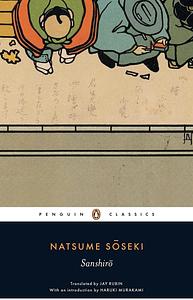You need to sign in or sign up before continuing.
Take a photo of a barcode or cover
emotional
hopeful
inspiring
lighthearted
reflective
medium-paced
hopeful
inspiring
lighthearted
reflective
relaxing
medium-paced
Plot or Character Driven:
A mix
Strong character development:
Complicated
Loveable characters:
Yes
Diverse cast of characters:
No
Flaws of characters a main focus:
No
reflective
slow-paced
Plot or Character Driven:
Character
Strong character development:
Complicated
Loveable characters:
No
Diverse cast of characters:
Yes
Flaws of characters a main focus:
Complicated
Plot or Character Driven:
Plot
Strong character development:
Yes
Loveable characters:
Yes
Diverse cast of characters:
Yes
Flaws of characters a main focus:
Yes
You can see from the start and finish date that I read this book disparately over several months. It was in an intense term at university with various personal and academic pressures that meant it took me so long to finish it. It also dragged a lot at various parts and I questioned why I persisted at times.
I think I persisted because I felt like I identified to an extent with Sanshiro, the separation between his hesitant mind and his surroundings, his glorification of the abstract notion of academia and love and his failure to translate that into reality. He’s an impassive presence in his own narrative, a shadow in his own illuminations, interesting as he plays the role of narrator and protagonist (ish).
There was an abundance of strained politeness and suppressed feelings as in much Japanese fiction but I thought there was a fairly striking contrast between sincerity and sterility in Sanshiro’s narrative. The discussions of the place of art/literature in 1900’s Japanese society was quite interesting too but I think overall maybe this book frustrated me because I identified too much w/ S and willed him and me to both be stronger. I certainly didn’t find it the relaxing read that I expected, more a perpetual internal conflict and torrent of doubt plaguing poor S 😂
I think I persisted because I felt like I identified to an extent with Sanshiro, the separation between his hesitant mind and his surroundings, his glorification of the abstract notion of academia and love and his failure to translate that into reality. He’s an impassive presence in his own narrative, a shadow in his own illuminations, interesting as he plays the role of narrator and protagonist (ish).
There was an abundance of strained politeness and suppressed feelings as in much Japanese fiction but I thought there was a fairly striking contrast between sincerity and sterility in Sanshiro’s narrative. The discussions of the place of art/literature in 1900’s Japanese society was quite interesting too but I think overall maybe this book frustrated me because I identified too much w/ S and willed him and me to both be stronger. I certainly didn’t find it the relaxing read that I expected, more a perpetual internal conflict and torrent of doubt plaguing poor S 😂
To be reductive, Sanshirō is a coming of age novel about a young man who faces the challenges of transitioning from life in rural to urban Japan. Of course this also parallels the events happening during Meiji era Japan, as the nation and its people transitioned from very traditional, to a more modern society.
On the whole, I felt like the book fit nicely between the humor and absurdity of I Am a Cat, as seen mostly through Yojirō and the melancholy of Kokoro. If you've never read any Sōseki before, I Am a Cat is still the best place to start.
On the whole, I felt like the book fit nicely between the humor and absurdity of I Am a Cat, as seen mostly through Yojirō and the melancholy of Kokoro. If you've never read any Sōseki before, I Am a Cat is still the best place to start.
emotional
informative
mysterious
reflective
medium-paced
Plot or Character Driven:
A mix
Strong character development:
Complicated
Loveable characters:
Complicated
Diverse cast of characters:
Yes
Flaws of characters a main focus:
Complicated
Overall it’s pragmatic . Soseki’s writing approach reminds me of Murakami but just in a little expense . With Murakami, there’s this gripping force of luring factor that can be sensed throughout the beginning (due to his literary fashion) , but with Soseki, it takes time. Really thought this was just a typical university student journey etc. but around page 46 and so on there came forth the entities of philosophy, sudden deaths, choices and their contradictory consequences etc. And I also like how sanshiro signifies the fundamental maxim of being a human and a student. Just balanced.
inspiring
reflective
relaxing
sad
slow-paced
Plot or Character Driven:
Character
Strong character development:
Complicated
Loveable characters:
Yes
Diverse cast of characters:
N/A
Flaws of characters a main focus:
No
from the beginning’s « japan will perish » sanshiro struck me as very relevant
felt like a mix of jane austen and ernest hemingway
contains every word and exchange of a romance that will stick with both for the rest of their lives
love the idea of the painting vs a poem
i didn’t really consider the « industrialization » and political metaphors of the novel, and more just leaned into the characters. i still think i got a lot out of it
reflective
slow-paced
Plot or Character Driven:
Character
Strong character development:
No
Loveable characters:
No
Diverse cast of characters:
No
Flaws of characters a main focus:
Yes
adventurous
emotional
informative
medium-paced
Plot or Character Driven:
Plot
Strong character development:
No
Loveable characters:
No
Diverse cast of characters:
No
Flaws of characters a main focus:
Yes
I mistakenly read 'And Then', the second book of this trilogy, before 'Sanshiro', the first one. Luckily, the trilogy reflects more on different phases in life, young adulthood, adulthood and middle age, for a different set of characters, so it wasn't a huge issue. But if you pursue this, my recommendation is to start with 'Sanshiro' because there is a progression in the tone if you will.
We are following Sanshiro, arriving in Tokyo as a student from the rural side of Kyushu. It is a story of contradictions and middle ground - Sanshiro in between rural upbringing and urban present, Japan itself between tradition and modernisation at the beginning of the 20th century. While intended as a bildungsroman, comparing it to European examples, this comes across as almost unfinished, and as a reader you have to read between the lines to understand what the character's growth might have looked like. He's pulled in 3 different directions, as evidenced by his dream: his life with his mother back in his village, becoming a scholar, and having a relationship with his love interest, Mineko, a modern young woman. He is naive, being tricked by his so-called friend for money, fearful in his approach to romance, and appears to go more through the mechanics of the expectations of others than his own nature.
My edition featured an introduction by Harukami Murakami, which I'd highly recommend! He explains his connection to the novel, as well as sheds some light into life events that have inspired Natsume in writing this novel, for example, conflicts on whether to have foreigners teaching at the Japanese universities, which he experienced during his own tenure. He was very familiar with the academic environment, both as a student as a professor, and this comes across here too, including publishing at newspapers as a student.
Something that impressed me in 'Sanshiro' was also the relationship to nature. 'And Then' also takes places in Tokyo, but it feels more grounded and urban, whereas 'Sanshiro' feels more romantic and wild. This is even down to what he as a writer chooses to focus on when describing scenes. I found out a lot about Asian trees, and Sanshiro is frequently pictured looking introspectively at the sky. It reads more like a balance between the city and nature, as if they were in perfect harmony, perhaps symbolising the balance that is evolving for Sanshiro himself.
Between the personal growth, the vivid description of Tokyo areas, and the analysis of historical cultural conflicts, this was a great read for me, both enjoyable as well as informative. I enjoyed following walks that I have taken too, re-familiarising myself with streets I knew, and also finding out about aspects of Japanese culture I didn't know about, like red sake or sake leeks used in marinades, or cemeteries burying urns of ash.
We are following Sanshiro, arriving in Tokyo as a student from the rural side of Kyushu. It is a story of contradictions and middle ground - Sanshiro in between rural upbringing and urban present, Japan itself between tradition and modernisation at the beginning of the 20th century. While intended as a bildungsroman, comparing it to European examples, this comes across as almost unfinished, and as a reader you have to read between the lines to understand what the character's growth might have looked like. He's pulled in 3 different directions, as evidenced by his dream: his life with his mother back in his village, becoming a scholar, and having a relationship with his love interest, Mineko, a modern young woman. He is naive, being tricked by his so-called friend for money, fearful in his approach to romance, and appears to go more through the mechanics of the expectations of others than his own nature.
My edition featured an introduction by Harukami Murakami, which I'd highly recommend! He explains his connection to the novel, as well as sheds some light into life events that have inspired Natsume in writing this novel, for example, conflicts on whether to have foreigners teaching at the Japanese universities, which he experienced during his own tenure. He was very familiar with the academic environment, both as a student as a professor, and this comes across here too, including publishing at newspapers as a student.
Something that impressed me in 'Sanshiro' was also the relationship to nature. 'And Then' also takes places in Tokyo, but it feels more grounded and urban, whereas 'Sanshiro' feels more romantic and wild. This is even down to what he as a writer chooses to focus on when describing scenes. I found out a lot about Asian trees, and Sanshiro is frequently pictured looking introspectively at the sky. It reads more like a balance between the city and nature, as if they were in perfect harmony, perhaps symbolising the balance that is evolving for Sanshiro himself.
Between the personal growth, the vivid description of Tokyo areas, and the analysis of historical cultural conflicts, this was a great read for me, both enjoyable as well as informative. I enjoyed following walks that I have taken too, re-familiarising myself with streets I knew, and also finding out about aspects of Japanese culture I didn't know about, like red sake or sake leeks used in marinades, or cemeteries burying urns of ash.





